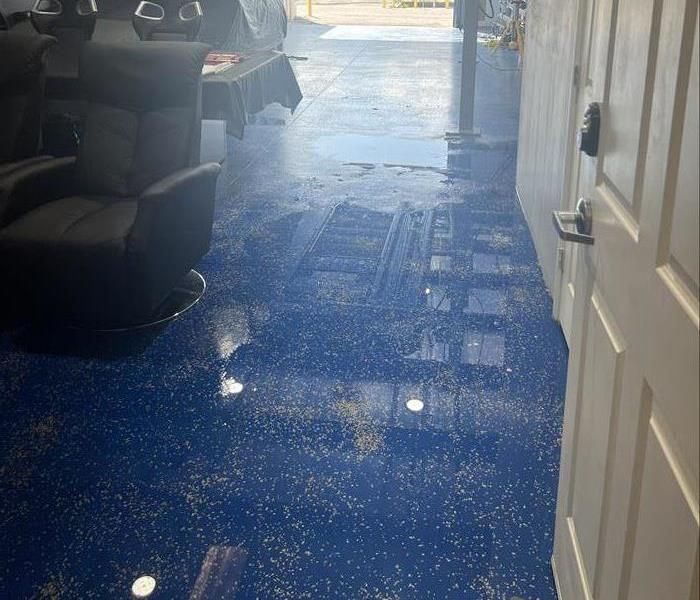Taking Action After Water Damage: A Guide by SERVPRO
12/1/2023 (Permalink)
Water damage can be a sudden and distressing event that impacts your home and belongings. Whether it's the result of a burst pipe, a leaking roof, or a flood, knowing the right steps to take can make a significant difference in minimizing damage and ensuring a swift recovery. In this blog post, SERVPRO provides a guide on what steps you should take if your home has sustained water damage.
1. Ensure Safety:
Safety should always be your top priority. Before entering a water-damaged area, ensure that it is safe to do so. If there are electrical hazards or structural damage, wait for a professional assessment.
2. Stop the Water Source:
If the water damage is due to a burst pipe or a leaking appliance, turn off the water supply to prevent further flooding.
3. Document the Damage:
Take photos or videos of the affected areas and damaged items. This documentation can be valuable for insurance claims.
4. Contact Your Insurance Company:
Notify your insurance company about the water damage as soon as possible. They will guide you through the claims process and may recommend mitigation steps.
5. Call SERVPRO:
Contact SERVPRO for professional water damage restoration services. Our trained technicians have the expertise and equipment to assess the extent of the damage, extract standing water, and initiate the drying and restoration process.
6. Remove Water:
If it's safe to do so, begin removing standing water using a wet/dry vacuum or buckets. However, SERVPRO's industrial-grade equipment is better suited for thorough water extraction.
7. Promote Air Circulation:
Open windows and doors to promote air circulation, which can help with drying. Use fans and dehumidifiers if available.
8. Remove Wet Items:
Remove wet furniture, rugs, and personal items from the affected area to prevent further damage. Place them in a dry area or, if necessary, outdoors to dry.
9. Salvage Important Documents:
If you have important documents or valuable items that are wet, gently separate and lay them out to dry. Avoid excessive handling to prevent further damage.
10. Discard Contaminated Materials:
Items that have been contaminated by sewage or other hazardous materials should be disposed of properly. SERVPRO can assist with safe disposal.
11. Address Mold Concerns:
If water damage is left untreated, it can lead to mold growth. If you suspect mold, contact SERVPRO for mold inspection and remediation services.
12. Monitor the Situation:
Keep a close eye on the affected areas during the drying process. If you notice any changes or concerns, communicate them to SERVPRO technicians.
13. Prepare for Restoration:
Once the affected areas are dry, SERVPRO will work with you to assess the damage and plan the restoration process. This may include repairs, painting, or other necessary tasks to bring your home back to its pre-damaged condition.
Conclusion:
Water damage can be a challenging experience, but taking the right steps can help you navigate the situation effectively. SERVPRO is here to assist you with professional water damage restoration services, ensuring that your home is restored to its optimal condition. Don't hesitate to reach out to us when water damage strikes – we are dedicated to helping you through the process and restoring your peace of mind.





 24/7 Emergency Service
24/7 Emergency Service
